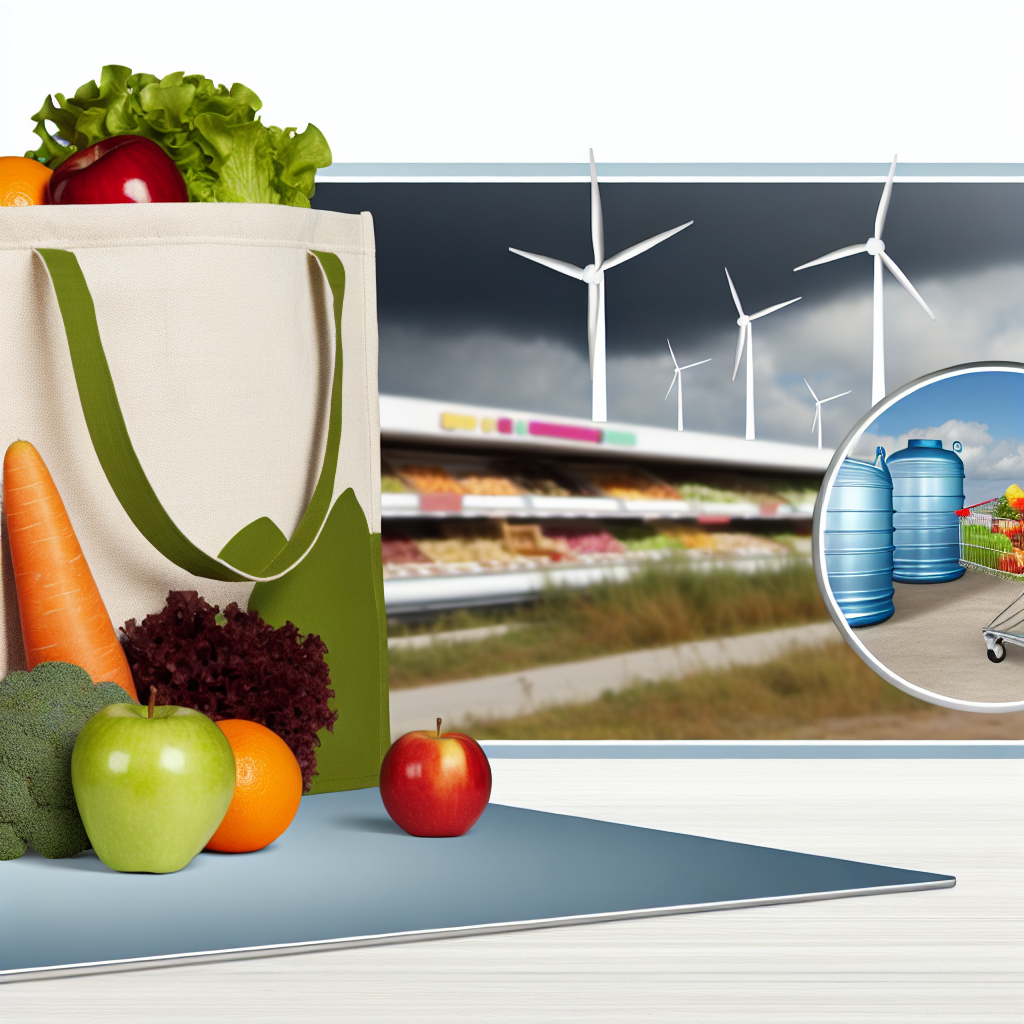10 Cool Ways to Cut Your Grocery Bill and Go Green
Welcome to the Frugal Zeitgeist blog! We’re here to help you save money while also taking care of our planet. If pricey grocery bills and the environmental effects of your food choices have been bugging you, don’t fret! We’ve got tips for both your wallet and Mother Earth. Let’s explore 10 creative ways to spend less on groceries and go green at the same time. Ready? Let’s go!
Introduction
Grocery prices are going up, and it can be tough to deal with. Plus, the way food is made impacts the environment. But guess what? Being eco-friendly can also help you save money. This blog post has tips to cut your grocery bills and keep the Earth happy.
1. Plan Meals with a Green Twist
Planning meals can save you money and be good for the planet. Think of it like yoga for your grocery shopping—relaxing, flexible, and healthy.
- Waste Less Food: When you plan, you buy only what you need, so you waste less. No more forgotten foods turning into mush in the fridge.
- Seasonal and Local Ingredients: Use ingredients that are in season and grown nearby—they’re usually cheaper and better for the environment.
- Flexible Plans: Make plans that allow for some fun changes, like a surprise taco night, but still stick to reducing waste.
2. Try More Plant-Based Meals
You don’t have to give up burgers for good, but eating more plant-based meals helps a lot.
- Good for You and Earth: Plant-based meals are healthy for you and kinder to the planet. Less meat means fewer carbon emissions.
- Affordable Proteins: Lentils, beans, and chickpeas are inexpensive and can replace meat in many meals.
- Easy Recipes: Try dishes like plant-based chili, lentil soup, or chickpea curry—they’re yummy and budget-friendly!
3. Buy in Bulk and Skip the Packaging
Buying in bulk saves money and reduces waste. It’s a win-win!
- Save Money and Cut Waste: Bulk items often cost less and don’t need as much packaging.
- Set Up Your Pantry: Use jars and containers to store bulk items in your kitchen.
- Shop at Bulk Stores and Markets: Bring your own containers to bulk food stores or farmers’ markets—they’ll be your new favorites.
4. Grow Your Own Food
Want to start gardening? It’s rewarding and saves money.
- Benefits: Growing your own veggies helps save money and cuts down on food waste.
- Easy Starters: Start with simple plants like tomatoes, basil, and lettuce.
- Use Small Spaces: If space is tight, try vertical gardens or window herb boxes.
5. Reduce Food Waste
Food waste is bad for the budget and the planet. Let’s reduce it!
- Compost: Turn kitchen scraps into compost to nourish your garden.
- Creative with Leftovers: Create new meals out of leftovers—think soups, stews, or sandwiches.
- Check Dates: “Best by” dates aren’t always exact—use your senses to decide if food is still good.
6. Pick Eco-Friendly Shops
Support local farmers and eco-friendly shops. They make a difference.
- Farmers’ Markets and Co-ops: Buying directly from local farms supports them and reduces the distance food travels.
- Join CSA Programs: Get seasonal produce from a Community Supported Agriculture program.
- Eco-Friendly Stores: Some grocery stores focus on sustainability. They might cost more but offer special products and a good feeling.
7. Use Apps and Tools
Your phone can help you save money and be green with these apps.
- Track Spending: Apps like Mint help monitor your grocery expenses.
- Plan Meals: Use Mealime or Paprika apps to organize meals and cut waste.
- Sustainability Apps: Download Good On You for eco-friendly choices.
8. Choose Organic and Fair Trade
You can buy organic without spending too much. Be smart about it.
- Eco Benefits: Organic and fair trade products are better for the environment.
- Pick Smartly: Buy organic for the “Dirty Dozen” produce to avoid pesticides.
- Talk to Local Farmers: Some small farms use organic methods even if not certified—ask them for details.
9. Make Your Own Household Items
DIY projects can save money and reduce waste at home.
- Save Money: Making things like bread and cleaning products at home can be cheaper.
- Eco Benefits: DIY means less packaging and fewer transport emissions.
- Start Simple: Find online tutorials to help you get started with DIY.
10. Team Up with Neighbors
Share resources with neighbors to save more.
- Group Buys: Purchase bulk items together to save money.
- Swap Produce: Trade your homegrown veggies with neighbors for variety.
- Build Community: Working with neighbors strengthens your community and shares resources.
Conclusion
Saving money and being eco-friendly go hand in hand. Using these tips, from planning meals to growing your own food, you can lower grocery bills and help the planet. Now it’s your turn—share your stories and tips with us! Let’s find more ways to save and go green together. Happy saving, and happy greening!
